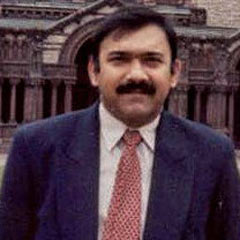All is quiet on the professional education front across the country. This ominous silence is often a mere lull before the battle cries are heard – heightening the anxiety, uncertainty and stress of thousands of students and their families.
It has always been interesting to watch the strategies, counter-strategies, comments and reactions of the government and the managements of self-financing medical colleges of Kerala.
This has in the last few years become as regular as the Onam boat races - with the students being made the pawns by all concerned.
While everyone agrees that the financial burden of establishing new medical colleges is something a cash-starved government cannot afford, the modus operandi private players adopt to realize these expenses has always been a matter of concern.
Fact Sheet
Medical care is expensive
The advances in technology have resulted in advanced forms of investigation and screening tests. Public is also increasingly aware that investigations can detect disease much before it clinically manifests and there is demand for early detection.
But the fact that these investigations involve heavy investment costs and fairly high running costs is often forgotten by the non-medical crowd. The newer generation spiral CT-SCANS, for example, are more informative and superior to the older scans. The higher cost of investment is, however, nearly impossible to pass on to the user -- in this case, the patient. For the uninformed patient, one CT scan is as good as another. Any higher charge would usually result in an uninformed comparison loaded against the more expensive care provider. Technology, purchasing power of the people, their expectations, the pressure of medico-legal litigation, have all become enmeshed in the healthcare scenario of Kerala.
It has, therefore, become necessary to search for a means to cross-subsidise the heavy investment incurred in medical hardware, in order to ensure the best facilities at the lowest possible costs.
Medical education can bridge the gap
Medical education has become an excellent source of money for large hospitals to narrow the divide currently existing between investment costs and affordability. The fees collected from students cushion and subsequently augment the patient-care budget.
Government doesn't have the funds
The government is unable to invest large sums of money in areas such as advanced healthcare. The 'free' medical-care provided at government hospitals leads to the huge crowds in government centres where advanced care facilities are available. Which, in turn, leads to the pitiable treatment meted out to the 'non-VIP' patient at government hospitals.
Private funding is not a bad idea
The national requirement for doctors is large and far above the current availability. The stupendous cost of setting up medical colleges, with their infrastructure, medical staff, support and ancillary staff, along with the spiralling expenses for salaries and other financial expenses, and the post-retirement benefits of the employees, all make it difficult for a cash-starved government to embark on such a venture.
Private funding for healthcare to provide these services, therefore, would not be an undesirable alternative. Private managements capable of leveraging medical education to narrow the expenditure-income gap would simultaneously be providing a platform for establishing much-needed training facilities.
But this raises another question, one that is in the mind of all medical educationalists: How can one ensure that the criteria for becoming a doctor is not hijacked by purchasing power?
As a medical teacher, I can confidently say that medical education is not everybody’s cup of tea. It is not uncommon to see even students who had scored very high in the school board exams and entrance exams getting overwhelmed by the medical course. Some of these promising youngsters realize that their dreams in life lay elsewhere. Many realize that they are suffering for their parents’ ambition of doing a course for which they just do not have the passion. If this is the case with the ‘toppers,' one only needs to imagine the situation of students who do not even have the necessary academic credibility.
Hence, it is absolutely necessary to select candidates for medical courses based on strict academic criteria. But what if the academically credible students do not have the financial ability to foot the course fees?
An ideal process would be like this:
a. Have academically credible students opting for the medical course.
b. Do a psychological and aptitude evaluation to justify their admission.
c. Students who meet these criteria are admitted.
d. Admitted students can pay the fees as prescribed by the particular college.
The calculation of fees requires a very honest evaluation by all concerned. Firstly, the colleges have to follow a staff and infrastructure pattern based on the recommendations of the Medical Council of India. The expenses attributable to the salaries of staff, infrastructure for teaching, teaching aids, hostels etc. can easily be estimated.
Secondly, the fees would have to cover recurring expenses, recover capital cost over a stipulated period, and to facilitate a reserve fund for further developments. Naturally, these fees would vary from college to college, based on the infrastructure provided.
Thirdly, the issue of the fees paid by some students cross-subsidizing some others has to be dealt with.
Here are few solutions that I would suggest:
1. Let the fees structure be in fairness to the managements, based on open costing of expenditure, including reasonable generation of reserve funds. One must realize that after all organizations invest money with some returns in mind.
2. All students including for government medical colleges to be selected by an open entrance exam.
3. Students are free to choose the college they wish to study in. All students selected must pay the fees expected from the individual college. If a candidate who scores very high rank wants to join a private institution, it should be left to his/her choice; but they will have to pay the fee prescribed by that institution.
4. For students who cannot afford such a fee, the management could consider some scholarships based on a merit-cum-means basis - provided the candidate continues to show the same promise even after joining the medical college. If the academic performance deteriorates, this scholarship could be withdrawn.
5. For other students, bank loans can be facilitated. But who will vouch for the collateral surety? The solution would be for the government to start a corpus, based on a percentage of the expenses the government would have hypothetically incurred if it were to start these medical colleges. This fund must be utilized to provide collateral security to the banks for the educational loans.
6. How can the government ensure that its trust in the student is repaid? It can make rules to withhold handing over the degree certificate, or make eligibility to postgraduate programmes dependent on the loans being repaid.
Alternatively, those medical graduates who have enjoyed government support can be asked to join community medical centres, PHCs and other government facilities, which face an acute shortage of staff, for a bond period, calculated based on the percentage or quantum of their outstanding loans.
But both private managements and government may not like to implement these suggestions. Scrutiny of expenses and loss of discretionary power to admit personal favourites would not be well received by most of private managements. Government too would be uneasy, as it will have to take concrete steps to ensure collateral funding, bank support, and ensure accountability for the expenses and subsidies.
But these can be easily handled, given the vast administrative capability available with the government.
The beneficiary would be the academically inclined and committed student who yearns to enter the world of healthcare.
(The views expressed are personal)

























 (Representative image)
(Representative image)